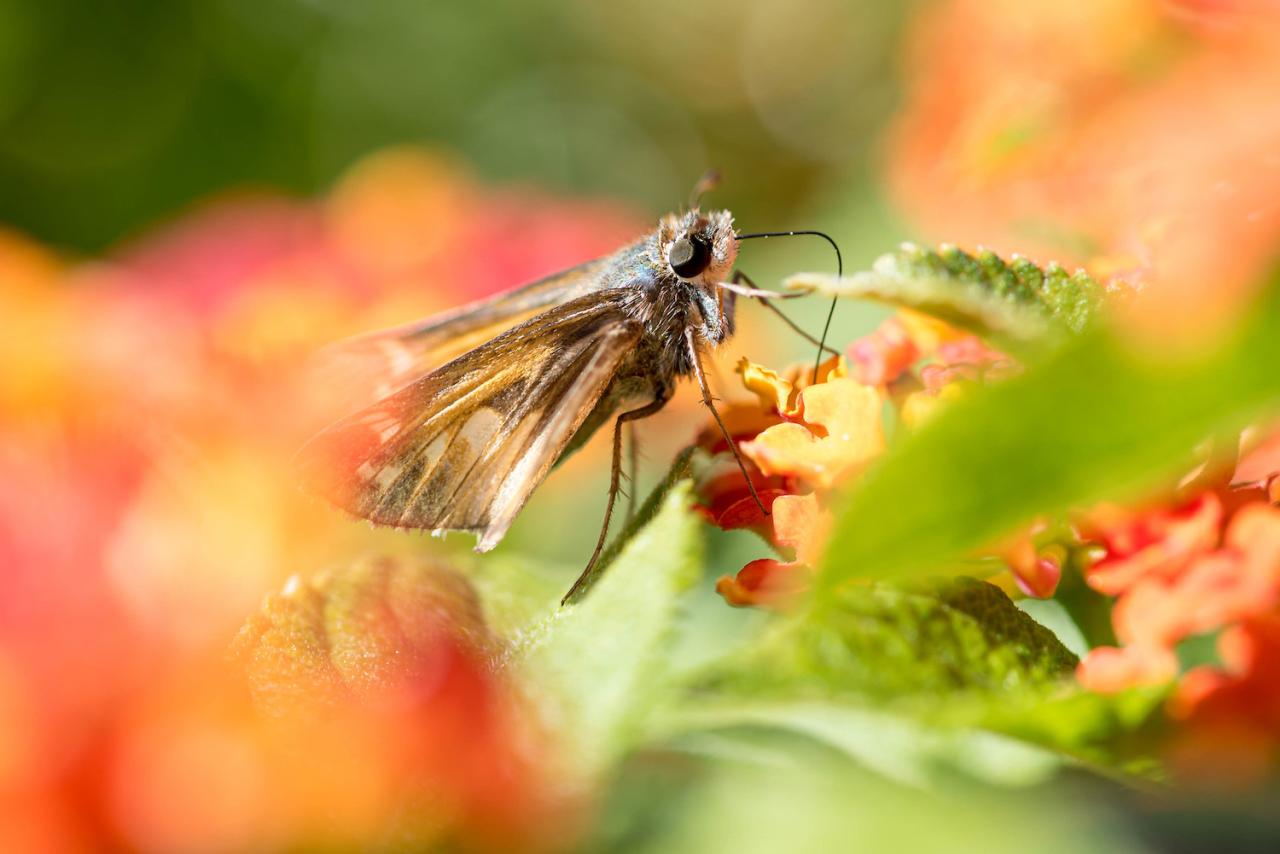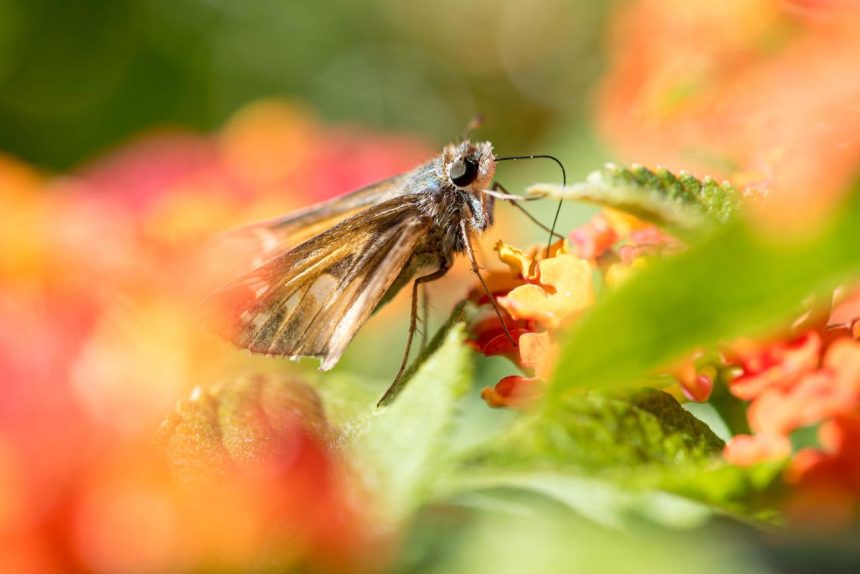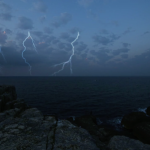Choosing the perfect lens for macro photography can be a daunting task. With numerous options available, each with its own unique features, it’s important to find the lens that best suits your skill level, budget, and subject preferences. The good news is, there’s a macro lens out there for everyone—you just need to know where to look!
In this article, I’ve curated a list of my top 11 macro photography lenses. Whether you’re a beginner or a seasoned pro, on a tight budget or ready to invest, shooting with a DSLR or mirrorless camera, you’ll find options to meet your needs. Each lens on this list has been carefully selected to help you capture the intricate beauty of small subjects.
So, let’s dive in and explore the world of macro photography lenses. Get ready to take your close-up shots to the next level!

1. Canon EF-S 35mm f/2.8 Macro IS STM
The Canon 35mm EF-S f/2.8 is one of my top macro lenses since it’s easy affordable, cheap, and efficient. I would highly recommend it to those who are just beginning to find the opportunity to explore macro photography without costing a fortune (plus it’s made to work with Canon’s cheaper range of APS-C cameras that are extremely loved by amateur and beginner photographers). The 35mm focal range does require you to be near to the subject however, once you take Canon’s 1.6x crop factor into consideration the actual focal length actually falls within the range of 56mm.
It is important to note that you can use this lens with a 35mm f/2.8 on the APS-C DSLRs such as Canon’s Rebel range or buy an adapter, and place the lens on one of Canon’s fantastic mirrorless cameras that RF-mount APS-C, like Canon’s EOS R10 or EOS R50..
The greatest feature of this lens is that it comes with a built-in rings lighting. It’s not super effective, but it could easily make what makes the distinction between decent image and a blurry one and will cast an attractive, even illumination over your subject. It also has stabilized images, and that’s an added benefit. Be aware that you’ll have to get very close to the subject for very high magnifications. This lens isn’t suited for macro photography of insects However, it’s excellent for shooting flowers, objects and other subjects that are still. It’s not as flexible or well-constructed as the other lenses in this checklist, however it provides excellent value for price!
Pros
- Cheap
- Ring light built-in
- Stabilization of the optical image (unusual at this cost)
Cons
- The optical performance isn’t as great as lenses with higher quality
- Plastic construction, instead of metal
- There is no weather sealing
- Cameras that are full-frame are not suitable.
2. Nikon AF-S 40mm f/2.8G Micro
The 40mm f/2.8 macro lens has been regarded for a long time by photographers as being one of the top choices for Nikon photographers looking to begin their journey into the art of close-up shooting (and those who want the versatility of a lens for all purposes). It’s light, compact and allows you to take amazing photos of tiny subjects without spending a ton of cash.
In actuality this lens Nikon 40mm f/2.8 is quite like the previously mentioned Canon 35mm macro lens however, it isn’t equipped with an ring light and image stabilization. This isn’t an issue but should you decide to purchase the use of a ring light, you could always buy one for an additional cost, while image stability is more of an option feature than essential when it comes to macro photography. Similar to this Canon 35mm lens mentioned above, you’ll have to be very close to your subject for the most precise photographs, so unless they’re cooperative, it might be difficult to capture insects, but you’ll certainly be able to enjoy a lot of nature and flower photography without any issues.
It’s an DX lens, meaning it isn’t compatible with full-frame cameras. On APS-C models, the focal length of 40mm is the same as 60mm. So aside from macro shots this lens has a lot of opportunities for portraits as well as street photography. Although the f/2.8 aperture isn’t as powerful as f/1.8 and f/1.4 lens, the aperture gives appealing blur and backgrounds that are out of focus. My favorite thing about this lens is that it’s 40mm. f/2.8 is its price: It’s the least expensive choice on this list, which means should you be a Nikon shooter and are contemplating diving in to macro photography this is an excellent choice for your first attempt.
Pros
- Amazing value; one of the most affordable autofocus macro lenses available
- Fantastic optical performance
Cons
- Made for cameras that crop.
- Autofocus can be slow
- Plastic construction with no weather sealing
3. Canon RF 100mm f/2.8L Macro IS USM
Professional macro photographers looking for high-quality image clarity are going to be very pleased by Canon’s Canon RF100mm f/2.8L, one of Canon’s latest lens releases and a total photography powerhouse. It’s specifically designed for RF-mount mirrorless cameras. Its cost is high, which makes it out of the reach of the majority of amateurs and beginners However, you’ll get what you pay for.
This lens doesn’t just deliver stunning, optically stunning photos It also comes with amazing bonus features that will impress anyone who shoots macro. The lens has a three-position focus limiter that ensures speedier, more reliable autofocus in different shooting situations. It also has a unique device to control spherical aberration which allows you to modify the optical quality of out-of-focus parts of your photo – not a necessity however, it’s a useful feature that will surely help.
If you’re an experienced macro-photographer seeking to upgrade from a less basic macro lens or if you’ve been a fan of Canon’s 100mm f/2.8L specifically designed for DSLRs, but are considering switching to mirrorless cameras, it’s the one you should purchase.
Pros
- Exquisite image quality
- Reliable, accurate autofocus
- Unique spherical aberration control ring
Cons
- Extremely expensive and not suitable for casual shooters.
- Autofocus can be slow
- The elements that focus are usually noisy
4. Nikon Z MC 85mm f/2.8 VR S
For a long time in the past, for a long time, the Nikon AF-S 85mm f/2.8G lens was the absolute most sought-after item in Nikon macrophotography. It was first released in 2006, it was able to stand up with much more modern competition and remains a great lens to use today. It is worth noting that Nikon has recently released an new version specifically made for mirrorless cameras with Z-mounts The Nikon Z 105mm f/2.8 VR S and the result is a spectacular lens that is sure to be on top of every Nikon macro shooter’s list.
What is it that makes this lens make it stand out? First, it has the most perfect optical quality. Images are extremely sharp that is vital when you’re trying to create professional-quality macro images. Autofocus is also fast and reliable. The lens comes with a customized function button that you can assign various functions within your camera’s menu. There’s also built-in image stabilization feature, which helps you to get sharp photos even when holding in low-light conditions (or in high magnifications! ) Also, there’s an option to limit focus that will improve autofocus speed in certain conditions.
Like that Canon RF 100mm f/2.8L discussed earlier this Z 105mm f/2.8 isquite expensive. However, if you’re an avid photographer who wants to print of your work or simply trying to get as much detail as possible, it’s well worth every cent.
Pros
- Amazing image quality
- OLED screen shows focusing information
- Much less expensive than the Canon 100mm f/2.8
Cons
- OLED screens are in part an gimmick
- The focus limiter switch contains two locations.
- It’s still relatively expensive
5. Sony FE 90mm f/2.8 Macro G OSS
If you’re a Sony photographer looking for the best macro lens available take a you should look no further than this 90mm f/2.8 Macro which blends all the best features that Nikon and Canon competitors provide. The lens is built with strong robust construction and water and dust resistance that can be particularly beneficial when taking macro photos in the snow, rain and much more.
Image stabilization is a feature that can be activated through a switch located at the side of the lens, and this lens is also equipped with a three-position limiter for focus like Canon’s Canon RF 100mm f/2.8. Sony’s lenses are known for their outstanding quality of optics and this is no exception, with images that are crisp with exceptional contrast and color reproduction. It has a programmable function button that lets you swiftly switch between manual focus and autofocus using a sliding rings.
One minor issue is the lens’s minimum aperture of f/22 – even when it’s stopped down to an aperture of f/22, depth of field isn’t that great at higher magnifications. You can however utilize focused stacking in order to adjust (which can help you avoid diffractive effects for better results). In at the conclusion of your day flowers as well as product shooters will love this lens. Despite the fact that insects photographers might want more of a focus length, it will perform admirably.
Pros
- The specially coated elements reduce flare of the lens and other problems that are common
- Very quick autofocus
- The ring of focus can be moved forward and backwards to enable and deactivate manually.
Cons
- 90mm isn’t as length as 100mm and the focal lengths of 105mm provided by rivals
- The aperture is relatively large, with a minimum of f/22.
6. Sigma 105mm f/2.8 DG DN Macro Art
Although some photographers are hesitant to use third-party lens manufacturers such as Sigma or Tamron have been striving to create top-quality glass and the latest releases from both firms have been comparable to their first-party counterparts in all aspects and sometimes even beating the first-party lenses in some aspects. Additionally, third-party lenses are generally much less expensive in comparison to Canon, Nikon, and Sony lenses, which makes them an excellent option to gain access to the latest features in photography without spending a fortune.
Sigma’s 105mm f/2.8 Macro is a must-have for anyone who is interested in taking stunning macro images. It has everything a close-up photographer needs, including outstanding images, speedy autofocus, as well as good weather resistance. Another interesting aspect is the aperture ring manual that allows you to smoothly alter the aperture using your hand. The lens also has an internal focus in a way that, unlike other lenses, it’s impossible to notice the front barrel protruding to the outside (which is helpful when photographing frightened insects and will keep you from knocking the flowers or other objects while you shoot).
Some people are unhappy with Sigma’s autofocus, which is slightly slow, but this has not been my experience. Also the majority of macro photographers prefer working using manual focus anyway. In the moment, Sigma only makes this lens for Sony and Leica cameras, which could be a significant feature to consider dependent on the equipment you currently have. If you’re an Canon or Nikon photographer looking for an extremely high-quality macro lens from a third-party I would recommend a few alternatives listed below. However, you should also look into Sigma’s selection of macro lenses that are available in other formats and many of them are top-quality (though they’re not easy to locate new).
Pros
- Fantastic value for money; priced lower than comparable first-party lenses
- Solid, durable construction
- A physical aperture control ring is ideal for those who want a more tactile shooting experience
Cons
- They are sharp, but they can’t really match the high-end superiority of the top-of-the-line macro lenses in this list.
- Only available only for Sony or Leica mounts
7. Fujifilm XF 80mm f/2.8 R LM OIS WR
It could be odd to have an 80mm macro lens in this listing, however bear in your mind that Fujifilm does not make full-frame cameras. This lens was designed specifically for their X series that includes APS-C cameras, giving this lens a maximum lens with a focal distance of around 120mm. Also, Fujifilm’s Fujifilm 80mm f/2.8 gives you the ideal combination of both worlds: the ability to use a shorter lens and the added working distance of a larger lens. Actually, as one of the larger lenses in this list the 80mm f/2.8 is a great choice for insect and pet photographers who want to take stunning photos however struggle to be close enough to their subject.
The lens comes with all the features you’d like to see given the price which includes weather sealing as well as a focus limiter switch as well as a ring that allows manual adjustment of the aperture. The built-in optical image stabilization feature is measured at five stops. This is a major benefit for those who work with tripods. Autofocus is quiet and fast. I would prefer that the minimum aperture was greater than the f/22 limit, but it’s not a major issue as you’ll often achieve better results using focus stacking in the first place.
Contrary to other camera systems there’s not a large variety of macro lenses available for Fujifilm models However, with this lens you don’t need to think about any other lens.
Pros
- A 120mm effective focal length is achieved when it’s mounted onto the Fujifilm APS-C camera.
- Quality build and durability
- Good built-in image stabilization
Cons
- A bit expensive, particularly for an APS-C lens.
- Surprisingly huge
8. Tokina ATX-i 100mm f/2.8 Macro
Photographers who are looking to upgrade their lenses from cheap ones like lenses like the Nikon 40mm or Canon 35mm but who don’t wish to empty their pockets will find plenty to appreciate within the Tokina 100mm f/2.8 macro lens. It is designed for cameras with full frame the lens is awe-inspiring quality and excellent optical performance, even though it doesn’t have the features that are offered by rivals that are more expensive. The 100mm focal length makes it perfect for macro photography and portraits. The image quality is excellent.
While this lens is only cheaper than the other models in its focal-length bracket it has some compromises. The body construction is high-end plastic instead of steel There isn’t sealant for weather or stabilization of images. Autofocus is good, but not as quick as comparable lenses made by Sony, Canon, and Nikon. However, these limitations will not matter to the majority of macro photographers, but you and your budget will surely appreciate having a quality lens for such a low cost.
Pros
- Great value for money; less than half the cost of many of its competitors.
- Clutch mechanism that allows quick switching between autofocus and manual focus.
- Barrel is not able to turn when extended.
Cons
- Plastic is nice, but it’s not as durable as metal
- Certain photographers prefer lenses with internal focus
- Autofocus is on a slower side.
9. Olympus M.Zuiko Digital ED 60mm f/2.8 Macro
Although micro Four Thirds cameras aren’t as well-known as they used to be but they do have a loyal following, and there are many photographers who love their tiny size and wide selection of lenses. With the Four Thirds sensor, focal lengths are multiplied to get their full-frame equivalent. So the Olympus’s 60mm f/2.8 macro lens gives you an impressive range of 120mm. It’s also considerably cheaper and lighter than comparable full-frame lenses. That’s an enormous benefit for those who travel (or those looking to take a lighter lens to fields).
In terms of specifications as well as image quality the Olympus 60mm f/2.8 macro lens is equipped with every feature you’d hope for from an excellent lens: The images are clear as well as focusing is fast and stable, and a three-position limiter for focus lets you capture subjects that are far away, very close or any combination or any combination of these. The lens doesn’t come with built-in image stabilizer feature, however many MFT cameras have stabilized in-body for sharper photos with high magnifications and in low lighting.
If you’re looking to get macro-quality images using an Olympus or Panasonic camera, it is impossible to beat the the price, size, weight and the performance this lens can provide.
Pros
- Small and light
- Actual 120mm focal length
- Lens barrel comes with useful built-in indicators to help focus on subjects in close proximity
- Works with both Olympus as well as Panasonic cameras.
Cons
- No built-in image stabilization
- Great picture quality and image clarity is a good thing for an MFT lens, but it doesn’t be as sharp as its full-frame counterparts
10. Irix 150mm f/2.8 Macro
At first glance at first, at first glance, the Irix 150mm f/2.8 might not seem to be worth considering because it’s manual focus, does not include image stabilization as well as its performance in the optical department isn’t as good with its competitors. However, if you examine it closely photographers who shoot macros will find plenty to appreciate about. One of the reasons is that it has one of the largest focal lengths any lens in this list. This is ideal for photographers looking to capture high-magnification images without having to physically approach their subjects. With a reach of 150mm it is possible to capture bees as well as grasshoppers and butterflies in stunning clarity And you don’t have to worry about frightening your subjects during the shot.
The lens is incredibly weather sealing and the lens has a massive, heavy manual focus ring that helps you get the perfect shot. If you’re just beginning to get in to macro photography shooting manually might take some time getting familiar with however it’s an extremely effective way of determining the focus point in a precise manner. It can also be physically locked to ensure that it doesn’t shift from one shot to the next. Additionally, it comes with a large Arca-type foot that functions perfectly with many tripods. Additionally, it’s just half of the price in comparison to the Canonor Nikon- Nikonand Sony competitors If you’re looking for an extra long lens, but are on a tight budget then this is an excellent option.
Pros
- Long focal length when compared with the majority of its contemporaries
- Strong weather sealing
- Built-in tripod foot to improve accessibility
Cons
- Manual concentrate only
- The images aren’t quite as sharp when compared to other macro lenses.
- No built-in image stabilization
11. Laowa 100mm f/2.8 Ultra Macro APO
Laowa has created its name by creating exclusive lenses that provide exceptional results. This 100mm f/2.8 macro lens keeps the tradition alive by expanding beyond “standard” magnifying power of macro lenses. It could even be considered an Super macro lens.
It’s true that most macro lenses, which includes the other lenses listed here allow you to reproduce objects in 1:1 ratio. This sounds complicated however it actually means that the dimensions of the objects you have on your sensor will be similar to the dimensions of objects you encounter in reality. Also, with 1:1 magnifications, you will be able to record incredible details which you can’t capture using a standard lens. However, this Laowa lens goes a step further by being capable of capturing images at 2:1 ratio, meaning that tiny subjects appear twiceas as large on the camera’s sensor as they would be in reality. This feature, when combined with the focal length of 100mm will allow you to take pictures using this lens that won’t be able to get from any other lens in this list.
There are a few significant trade-offs but. It is important to note that the Laowa 100mm f/2.8 is not just a manual focus, but also has a the aperture is manual, meaning that you cannot alter the aperture setting on your camera. This can result in quite an extensive learning curve however, if you’re looking to get stunning macro shots which aren’t achievable using other lenses, it’s definitely worth the effort. It’s also a fraction of the cost of the competition which allows its limitations to be a bit more manageable. If you’ve never had any close-focusing lenses previously, you might prefer to begin with another of these lenses listed here; the Laowa 100mm f/2.8 is a specialized model. Its the 1:1 macro magnification is to meet the needs of most.
Pros
- Amazing magnification ratio of 2:1
- Excellent value
- Large, easy to reach focus Ring that is large and easy-to-reach.
Cons
- Manual control creates a an arduous learning curve
- Barebones collection of features with its competitors
- The focal length that is long without image stabilization makes it difficult to use if you don’t have a tripod








